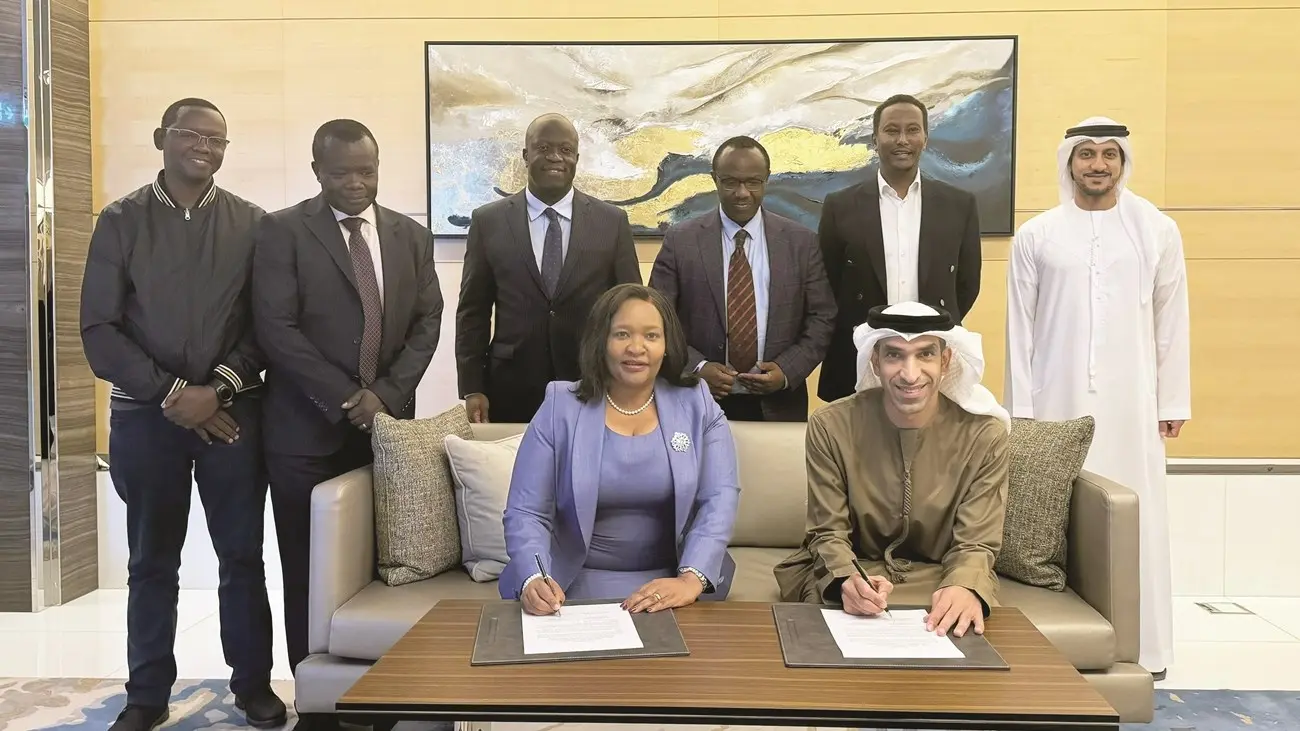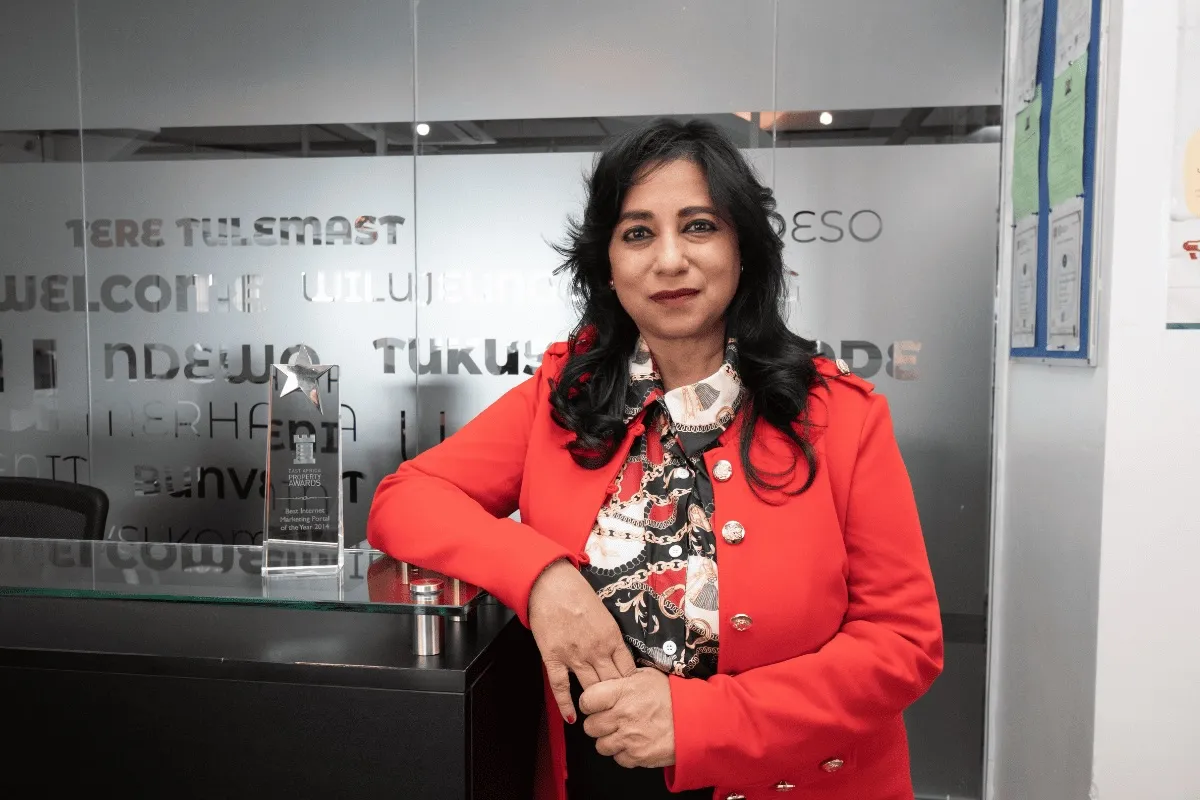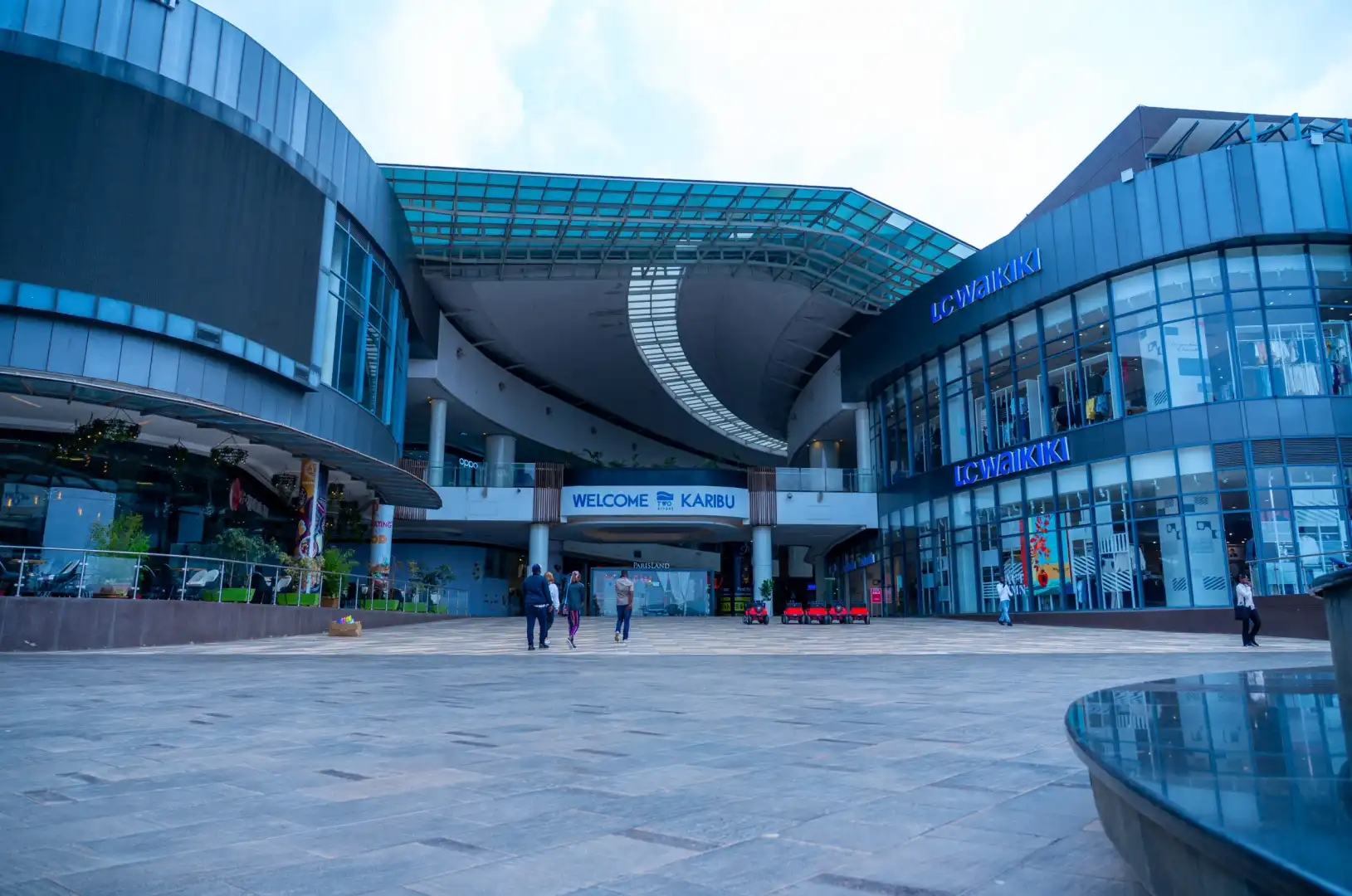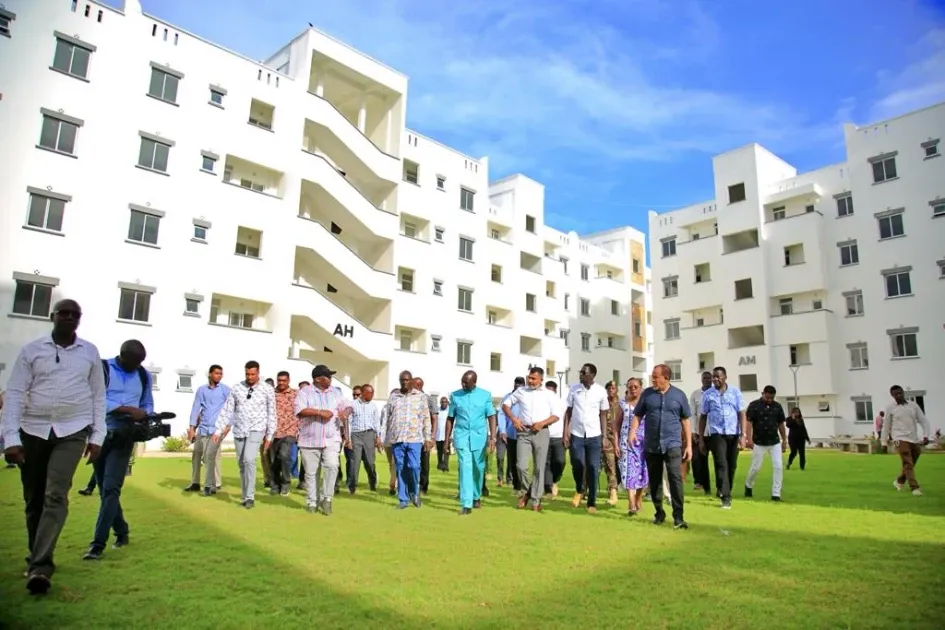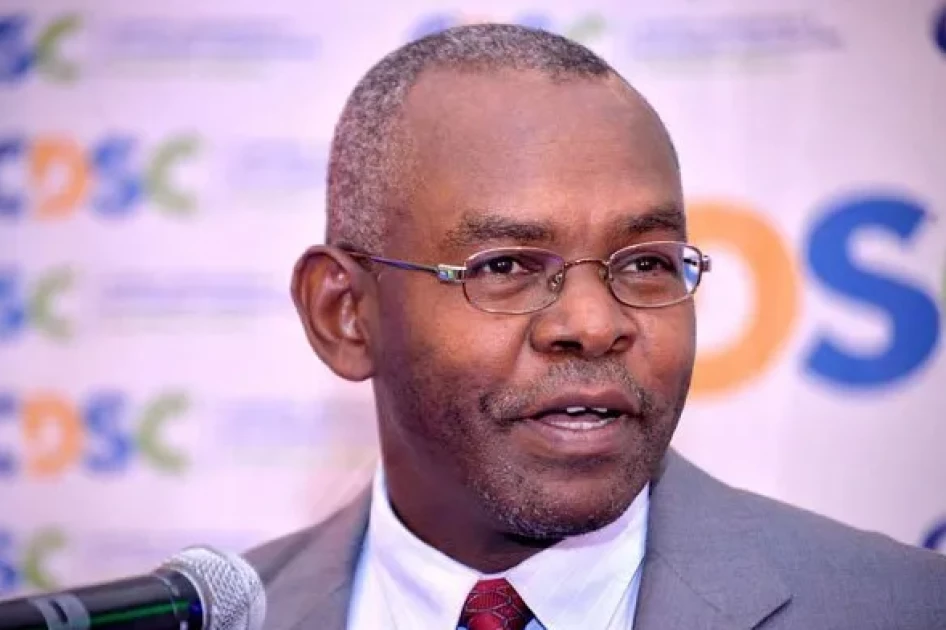In a landmark move that could reshape Kenya’s financial diplomacy and economic trajectory, the East African nation is preparing to receive the first $500 million installment of a $1.5 billion commercial loan from the United Arab Emirates (UAE). This initial disbursement, expected next week, marks a significant step in Nairobi’s pivot toward non-traditional lenders as it grapples with an expanding budget deficit, mounting debt repayments, and the search for sustainable economic growth.
Negotiated at a relatively competitive interest rate of 8.25% over seven years, the loan signals a deepening of Kenya’s ties with Gulf states at a time when global borrowing conditions remain challenging for emerging markets. With its $6.8 billion budget shortfall—equivalent to Sh887.2 billion—Kenya is navigating a delicate balancing act: keeping the economy afloat while executing critical fiscal reforms and maintaining political stability ahead of the 2027 elections.
“The facility has been negotiated and signed, but the drawdown doesn’t have to be a bullet,” explained Treasury Cabinet Secretary John Mbadi during the IMF and World Bank Spring Meetings in Washington, D.C. “We are opting for a staggered withdrawal to better manage our financing pressures and avoid any unnecessary strain on repayments.”
Officials say that while Kenya has the capacity to draw up to $1 billion by June 2025, it has chosen to take only $500 million initially, tailoring the loan to immediate budgetary needs while allowing room for adjustment as economic conditions evolve.
The Loan Breakdown: Gulf Capital as a Strategic Pivot
This financing deal represents Kenya’s first major commercial loan backed by the UAE and could set the tone for a broader economic partnership between Nairobi and the Gulf. Traditionally reliant on Eurobonds, syndicated commercial bank loans, and concessional funding from institutions like the IMF and World Bank, Kenya is now turning to strategic bilateral partners who offer not just capital, but also investment aligned with development goals.
Compared to the 10.3% yield on Kenya’s 2024 Eurobond issuance—a reflection of the country’s risk premium amid turbulent global financial markets—the 8.25% loan from the UAE is relatively favorable. Still, it remains significantly more expensive than concessional loans from the World Bank (which typically carry 2–3% interest rates) or soft loans from countries like Japan.
“This loan is a double-edged sword,” noted economist Dr. Wanjiku Mwangi of Strathmore University in Nairobi. “It brings much-needed liquidity to the budget but adds stress to an already overleveraged fiscal structure.”
Currently, Kenya’s public debt stands at Sh14.2 trillion, or approximately $110 billion—representing about 73% of the country’s GDP. This figure is far above the IMF’s recommended debt-to-GDP ceiling of 55% for developing economies. Alarmingly, 64% of government revenues are now allocated toward servicing existing debt.
The UAE-Kenya Axis: Oil, Health, Ports, and Humanitarian Aid
The deepening financial relationship between Kenya and the UAE is part of a broader geopolitical and economic shift that has seen Gulf nations expanding their influence in East Africa. This multi-sector partnership includes energy, healthcare, infrastructure, and humanitarian support—sectors that are vital to President William Ruto’s development agenda.
Energy Security has been a top priority. In 2023, Kenya signed a crucial petroleum supply deal with the UAE and Saudi Arabia that helped reduce dollar pressure on the shilling and ensured fuel supply stability during currency volatility.
Healthcare is another focal area. UAE-based Apeiro Limited holds a majority 55.99% stake in a Sh104.8 billion ($810 million) consortium leading Kenya’s ambitious Universal Health Coverage (UHC) rollout. The project, which aims to provide quality care for all citizens, is a key deliverable for the Ruto administration.
Infrastructure and Logistics are also part of the equation. Emirati companies are currently negotiating concessions to operate sections of the Mombasa and Lamu ports, though these talks have stirred controversy over transparency and national asset management.
Humanitarian Relief has not been overlooked. In 2024, the UAE provided $15 million in aid to help over 300,000 Kenyans displaced by devastating floods linked to climate change.
“The Gulf sees Kenya as the natural gateway to East Africa’s 300 million-strong consumer base,” explained Ahmed Salim, a regional geopolitical analyst. “For Kenya, the UAE presents an investor that’s less interested in imposing harsh conditionalities and more focused on strategic returns.”
A Resurgent Economy: Shilling Strengthens, Ethiopia Wobbles
The influx of Gulf capital comes at a moment of cautious optimism for Kenya’s economy. According to the latest IMF forecasts, the country is projected to surpass Ethiopia in GDP terms for the first time in years—reaching $132 billion in 2025 compared to Ethiopia’s projected $117 billion.
This shift underscores two diverging economic narratives:
- Kenya’s strengths include a 21% rebound in the shilling during 2024, buoyed by record diaspora remittances totaling $4.2 billion, a strong rebound in tourism, and solid exports of tea, flowers, and coffee.
- Ethiopia, by contrast, continues to struggle with the fallout from the Tigray conflict, persistent drought impacting 25 million people, and a $28 billion debt crisis that has severely constrained fiscal space.
“Kenya’s diversification into technology, services, and light manufacturing gives it a competitive edge,” said Amani Mwafrika, lead economist at the World Bank’s Kenya office. “However, structural issues like a 13% youth unemployment rate continue to weigh on long-term growth.”
Public Discontent: Tax Protests and Budget Blowbacks
The UAE loan arrives less than a year after nationwide protests rocked Kenya in response to controversial tax hikes. In June 2024, demonstrations erupted over new levies on basic goods such as bread and cooking oil, as well as digital income from content creators and influencers. Branded under the hashtag #StopTaxingPain, the protests forced the government to shelve $2.3 billion worth of revenue-generating measures.
“We’re caught between austerity and anger,” said Linda Odhiambo, a civil rights activist who led protest marches in Nairobi. “While the government looks to patch holes with foreign loans, it’s the everyday Kenyan who will bear the burden down the line.”
The public backlash not only widened the fiscal gap but also intensified scrutiny on how Kenya sources its external financing. The UAE loan, while timely, has reignited debates about long-term debt sustainability.
The IMF Exit and What Comes Next
Adding further complexity to the situation is Kenya’s sudden exit from a $3.6 billion IMF program in late 2024. The withdrawal, which left $850 million in undisbursed funds on the table, was triggered by disagreements over fuel and food subsidy cuts.
Former Central Bank Governor Prof. Njuguna Ndung’u warned that the UAE loan, while buying short-term breathing room, could make future IMF negotiations even more challenging.
“The Fund will insist on strict fiscal discipline as a precondition for any new Extended Credit Facility,” said Ndung’u. “But with elections on the horizon, the government may find it politically difficult to implement those conditions.”
Voices from the Ground: Hope and Skepticism
While the macroeconomic implications are significant, it’s the everyday Kenyan who will ultimately judge the success of this financing deal.
James Kariuki, a small business owner in Nairobi’s Gikomba market, offered a pragmatic view: “If this money fixes roads, improves electricity supply, or helps with healthcare, I’ll support it. But if it disappears into pockets, then we’ve just added more debt for nothing.”
In rural regions like Eldoret, skepticism runs deeper. “Every time they borrow money, they talk about ‘development,’” said Agnes Chebet, a maize farmer. “But we still don’t have proper storage facilities. Our harvests rot. Where is the benefit?”
The Gulf’s Bigger Africa Strategy
Kenya is just one piece in the UAE’s $50 billion investment puzzle in Africa. The Emirates are aggressively pursuing growth opportunities across the continent, focusing on:
- Ports and Maritime Logistics: DP World already operates Berbera Port in Somaliland.
- Renewable Energy: Solar projects are being developed in Zambia and Rwanda.
- Agribusiness: UAE investors are acquiring farmland in Ethiopia and Sudan to secure food supply chains.
“Africa is the final frontier for global capital,” said Khalid Al-Mansoori, a Dubai-based financier with exposure to African infrastructure deals. “Among African nations, Kenya stands out due to its political stability, skilled workforce, and relatively advanced infrastructure.”
Risk Factors: Transparency and Oversight
Despite the strategic optimism, the loan deal has triggered political outcry over lack of transparency. Opposition leaders, led by Minority Leader Opiyo Wandayi, claim the government bypassed Parliament and failed to disclose key loan terms, including potential collateral requirements.
“Kenyans have a right to know what they’re signing up for,” Wandayi said in a press briefing. “Opaque deals can easily spiral into sovereign risk.”
Transparency International Kenya echoed the concern, warning that without robust oversight, the country could repeat mistakes seen in other debt-stressed nations. The most frequently cited cautionary tale is Sri Lanka’s Hambantota Port, which was leased to China for 99 years after debt repayment failures.
What Will the Money Be Used For?
According to insiders at the National Treasury, the funds will be directed toward a mix of infrastructure, economic zones, and debt management. Key projects under consideration include:
- Konza Technopolis: A $2 billion tech-driven smart city still struggling to secure reliable funding.
- Dongo Kundu Special Economic Zone (SEZ): A UAE and China-backed industrial hub near Mombasa.
- Eurobond Buybacks: Plans to repurchase high-interest sovereign bonds to reduce future repayment costs.
“This loan must be used to catalyze productivity—not fund recurrent expenditure,” warned Victoria Kwakwa, World Bank Vice President for East and Southern Africa. “Investments should focus on infrastructure, education, and climate resilience if Kenya wants long-term returns.”
Final Thoughts: A Bold Bet or a Debt Trap?
Kenya’s UAE-backed loan symbolizes the evolving nature of development finance—one that mixes geopolitical strategy with economic necessity. While it provides a critical lifeline for Kenya’s short-term financing needs, its long-term success hinges on prudent fiscal management, transparent governance, and the country’s ability to translate capital into inclusive development.
As President Ruto walks this tightrope, millions of Kenyans are left wondering: Will Gulf billions build a foundation for the future—or simply deepen the country’s already troubling debt abyss?
Ready to take your career to the next level? Join our dynamic courses: ACCA, HESI A2, ATI TEAS 7 , HESI EXIT , NCLEX – RN and NCLEX – PN, Financial Literacy!🌟 Dive into a world of opportunities and empower yourself for success. Explore more at Serrari Ed and start your exciting journey today! ✨
photo source: Google
By: Montel Kamau
Serrari Financial Analyst
25th April, 2025
Article, Financial and News Disclaimer
The Value of a Financial Advisor
While this article offers valuable insights, it is essential to recognize that personal finance can be highly complex and unique to each individual. A financial advisor provides professional expertise and personalized guidance to help you make well-informed decisions tailored to your specific circumstances and goals.
Beyond offering knowledge, a financial advisor serves as a trusted partner to help you stay disciplined, avoid common pitfalls, and remain focused on your long-term objectives. Their perspective and experience can complement your own efforts, enhancing your financial well-being and ensuring a more confident approach to managing your finances.
Disclaimer: This article is for informational purposes only and does not constitute financial advice. Readers are encouraged to consult a licensed financial advisor to obtain guidance specific to their financial situation.
Article and News Disclaimer
The information provided on www.serrarigroup.com is for general informational purposes only. While we strive to keep the information up to date and accurate, we make no representations or warranties of any kind, express or implied, about the completeness, accuracy, reliability, suitability, or availability with respect to the website or the information, products, services, or related graphics contained on the website for any purpose. Any reliance you place on such information is therefore strictly at your own risk.
www.serrarigroup.com is not responsible for any errors or omissions, or for the results obtained from the use of this information. All information on the website is provided on an as-is basis, with no guarantee of completeness, accuracy, timeliness, or of the results obtained from the use of this information, and without warranty of any kind, express or implied, including but not limited to warranties of performance, merchantability, and fitness for a particular purpose.
In no event will www.serrarigroup.com be liable to you or anyone else for any decision made or action taken in reliance on the information provided on the website or for any consequential, special, or similar damages, even if advised of the possibility of such damages.
The articles, news, and information presented on www.serrarigroup.com reflect the opinions of the respective authors and contributors and do not necessarily represent the views of the website or its management. Any views or opinions expressed are solely those of the individual authors and do not represent the website's views or opinions as a whole.
The content on www.serrarigroup.com may include links to external websites, which are provided for convenience and informational purposes only. We have no control over the nature, content, and availability of those sites. The inclusion of any links does not necessarily imply a recommendation or endorsement of the views expressed within them.
Every effort is made to keep the website up and running smoothly. However, www.serrarigroup.com takes no responsibility for, and will not be liable for, the website being temporarily unavailable due to technical issues beyond our control.
Please note that laws, regulations, and information can change rapidly, and we advise you to conduct further research and seek professional advice when necessary.
By using www.serrarigroup.com, you agree to this disclaimer and its terms. If you do not agree with this disclaimer, please do not use the website.
www.serrarigroup.com, reserves the right to update, modify, or remove any part of this disclaimer without prior notice. It is your responsibility to review this disclaimer periodically for changes.
Serrari Group 2025








